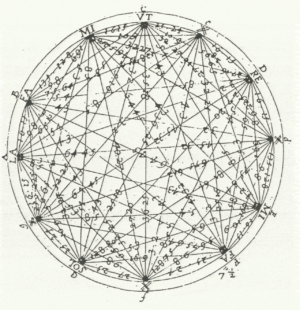Circle of 5ths Exercises

This is a progression of exercises to master the circle of 5ths. Any musician worth his salt should know the circle of 5ths inside and out. It is fundamental to all styles of (Western) music, including Classical and Jazz.
Every exercise goes through the circle to the left or counter-clockwise. This establishes a V–I relationship (like C→F). The other way is a IV–I relationship (as in C→G), which is not what we want.
How to use this guide #
If you can play all your Major scales reasonably well, you are ready for these exercises.
The exercises only show the first couple of keys in the circle of 5ths. It is up to you to do the whole circle of fifths. Also don't start at C major every time. Mix it up and start at any point in the circle of 5ths. Later on the exercises can be inverted. Make sure you practice all inversions.
Struggling with the Circle of 5ths?
Download this free Circle of 5ths Guide and finally make sense of key signatures, dominant-tonic motion, and how to apply it to real tunes.
Get the Free Guide →Write it out #
To start you should be able to write out the circle of 5ths. Take a blank sheet of paper and draw a circle with 12 ticks on in like a clock and write out the letter names of the circle.
Now go to the keyboard and play the following exercises, all the way around the circle.
Exercises on the Piano #
All the exercises in the blog post I demonstrate on the piano in this video.
Single note #

Now to be more compact let's alternate the direction, up and down, of the previous exercise. It will go down a 5th then up a 4th.
To be clear, all of these exercises go all the way around the circle. The following example demonstrates this. It starts at c and ends with c. Most of the exercises in this guide will only show the first 4 or 5 chords. It is up to you to figure it out for the rest of the circle.

Triads #

Triad inversions #



Root–3rd–7th #
Now we start getting into more Jazzy voicings.

You should always practice these in both inversions. Once starting with the 3rd on the bottom and the other with the 7th.

And then we will do dominant 7ths and minor 7ths.


ii–V–I #
Now we can put our 3 different 7th chords into a progression. This is the most basic and useful chord progression.

We can extend it by prepending a vi chord to it.

A common way to practice the ii–V–I progression is to chain them together like this:

Rootless voicings #
This is really weird if you've never heard rootless voicings. Stick with it. You can do cool jazz stuff with it later on. It will also forever change how you hear chords and voicings.
So to begin, let's take what our right hand was doing and put it in the left hand. I have marked the roots for reference. Sometimes when I practice some weird rootless voicing, I cross over my right hand and play the root.

You will want to practice everything inverted as well. Like this:

Now you can add in the 9th above or the 5th. Now we are getting into something not so bare.


This can be easily adapted for dominant 7ths or minor 7ths.

You can do the same thing with the ii–V–I progression from above.
For a comprehensive jazz voicing book see Jazz Keyboard Harmony. I have many Jazz harmonization books and this one is the best of it's kind. It's very thorough.
Now your right hand is free to do some cool bebop lick like this:

Traditional Voiceleading (non-Jazz) #

Notice here that the thumb of the right hand follows the chromatic scale downward. This is very similar to the dominant chords in Root–3rd–7th. Notice the nice voice leading of the the tri-tone resolving outward to the 6th.

And now we'll do some diatonic (all in the same key) exercises. Of course you will want to transpose these and practice in all 12 keys.

And now the minor version. Notice here that the first 3 chords sound like they are in E-flat (it's actually a ii–V–I progression). E-flat is the relative major of c minor. A common way to modulate to the relative major is to use the flat VII chord.

And with a little tweak we can do the Neapolitan:

Master the Circle of 5ths
Get these exercises and more in a free PDF.
Get the Free Guide →